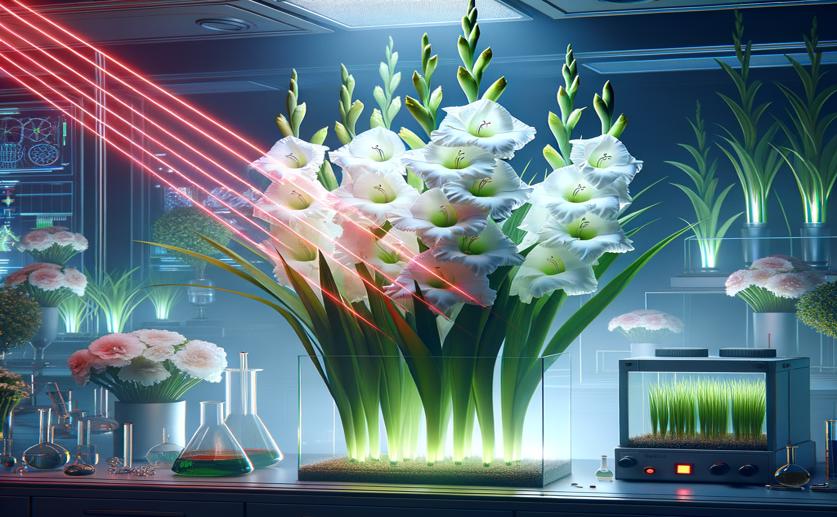
How Lasers Affect Growth and Genes in White Gladiolus Flowers
Greg Howard
17th March, 2024

Image Source: Natural Science News, 2024
Key Findings
- In Cairo, red laser light improved Gladiolus grandiflorus growth, leaf size, and flower traits
- Optimal results were achieved with a 20 mW laser for 5 minutes
- Laser treatment also induced genetic changes, potentially altering plant characteristics
References
Main Study
1) Laser-induced changes in the gene expression, growth and development of Gladiolus grandiflorus cv. "White Prosperity".
Published 15th March, 2024
https://doi.org/10.1038/s41598-024-56430-6
Related Studies
2) Effects of LED Light Spectra on the Development, Phytochemical Profile, and Antioxidant Activity of Curcuma longa from Easter Island.
3) The Interaction Effect of Laser Irradiation and 6-Benzylaminopurine Improves the Chemical Composition and Biological Activities of Linseed (Linum usitatissimum) Sprouts.
4) Natural Biostimulant Attenuates Salinity Stress Effects in Chili Pepper by Remodeling Antioxidant, Ion, and Phytohormone Balances, and Augments Gene Expression.



 8th March, 2024 | Jenn Hoskins
8th March, 2024 | Jenn Hoskins